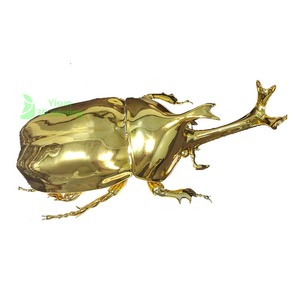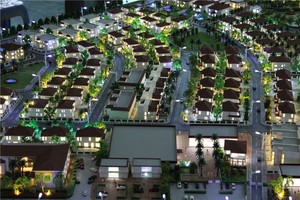
All categories
Featured selections
Trade Assurance
Buyer Central
Help Center
Get the app
Become a supplier

(190131 products available)



















































3D free models are digital representations of objects or characters created in three-dimensional space. They are used in various applications such as gaming, animation, virtual reality, and 3D printing. These models are typically composed of vertices, edges, and faces that define their shape and structure. They can be textured and rigged for more advanced uses like simulations and interactive environments. Here are some of the various types of 3D models:
3D free models come in different designs depending on the nature of the object and the intended application. Below are some of the key design aspects to consider when dealing with a 3D model.
Complexity and Detail
The complexity of a 3D model refers to the number of polygons or vertices that make up the object. High-complexity models are detailed and realistic, suitable for close-up views in animation or rendering. Low-complexity models are simpler and more efficient for real-time applications like video games. Detail also encompasses the intricacies of features like textures, materials, and surface imperfections that add realism. Detailed models are often used in visual effects, architecture, and product visualization, where realism is crucial.
File Formats and Compatibility
3D models come in various file formats, each with strengths and weaknesses. Common formats include OBJ, FBX, STL, and GLTF. OBJ is widely used for its simplicity and compatibility with many software applications. FBX supports animations and is popular in game development and animation. STL is primarily used for 3D printing, while GLTF is designed for web applications and real-time rendering. When choosing a model, consider the target application and its compatible file formats to ensure seamless integration.
Texture and Materials
Textures and materials are crucial for achieving realism in 3D models. Textures are 2D images applied to a model's surface to simulate detail, such as wrinkles, scratches, or patterns. Materials define how light interacts with a model's surface, affecting its appearance. They can simulate various properties, like metal, wood, or glass. High-quality textures and materials enhance a model's visual appeal and realism, making it suitable for applications like film, games, and virtual reality.
Animation and Rigging
For models intended for animation, rigging is a critical design aspect. Rigging involves creating a skeletal structure (bones and joints) within a model, allowing it to move and deform naturally. This is essential for character models in animation and games. Additionally, animated models may include predefined animations, such as walking, running, or jumping. Well-rigged and animated models are essential for creating lifelike movements in characters and objects.
Optimization and Performance
Optimization ensures that a 3D model performs efficiently without sacrificing quality. This is particularly important in real-time applications like video games and virtual reality. Optimization techniques include reducing polygon count, baking textures, and using Level of Detail (LOD) models. Performance considerations also involve ensuring the model loads quickly and runs smoothly on various hardware configurations, providing a seamless user experience.
3D models can be used in various ways and can be combined with different elements to create stunning visuals. Here are some wearing and matching suggestions:
Wearing suggestions
When incorporating a free 3D model into a scene, users should consider the overall style and theme they are going for. For instance, if they are aiming for a realistic look, they should choose models that are highly detailed and have realistic textures, such as a 3D model of a car or a building. Additionally, they should pay attention to the lighting and shadows in their scene to ensure that the model blends seamlessly in with the environment. On the other hand, if users are going for a more stylized or cartoony look, they should choose models that have a distinct art style or are less realistic, such as low-poly models or models with exaggerated features. Moreover, users should consider the scale and proportion of the model in relation to the other elements in their scene and adjust accordingly to achieve a cohesive and visually appealing composition.
Matching a 3D model to its environment requires users to consider several key factors. First, they should analyze the lighting conditions of the environment and adjust the model's materials and textures accordingly to achieve consistent illumination and shadowing. Additionally, they should pay attention to the color palette of the surrounding elements and ensure that the model's colors complement or harmonize with the overall scheme. Moreover, they should consider the scale and perspective of the model relative to its environment, adjusting its size or positioning as needed to create a realistic and cohesive integration. By meticulously matching these attributes, users can seamlessly blend the 3D model into its environment, resulting in a convincing and immersive visual composition.
Matching suggestions
When matching 3D models with different textures, users should consider the overall aesthetic and theme they want to achieve. For instance, if they are working on a realistic rendering, they should look for textures that closely mimic real-world materials. They should consider factors such as color, reflectivity, and surface detail. Additionally, users should pay attention to the compatibility of textures with the model's geometry. They should ensure that the textures are properly mapped and aligned to avoid any distortion or stretching. Moreover, they should consider the resolution of the textures to ensure that they maintain quality when applied to the model. By carefully selecting and matching textures, users can enhance the visual appeal of their 3D models and create a more immersive and realistic environment.
Matching 3D models with different lighting conditions requires a different approach. Users should consider the impact of lighting on the overall mood and atmosphere of their scene. They should experiment with different lighting setups, such as directional, ambient, or point lights, to achieve the desired effect. Additionally, they should consider the materials and shaders used in their models. They should adjust their properties to respond appropriately to different lighting scenarios. For example, they should increase the specular reflection for a more polished look under bright lights or adjust the transparency settings for materials like glass or water. Moreover, they should pay attention to the placement and intensity of lights to highlight the key features of their models and create a balanced composition. By understanding the principles of lighting and its interaction with 3D models, users can effectively enhance the visual quality of their projects.
Q1: How can one use 3D models in printing?
A1: To use a 3D model for printing, one needs to prepare the model in a compatible format such as STL or OBJ. The model is then imported into slicing software that converts the 3D model into instructions for the printer, usually in G-code. This code directs the printer on how to build the object layer by layer. Finally, the prepared file is transferred to the 3D printer to start the printing process.
Q2: What software is needed to modify a 3D model?
A2: Modifying a 3D model typically requires CAD (Computer-Aided Design) software. Popular options include Blender, Autodesk Maya, and Tinkercad. These programs offer tools to edit, sculpt, and refine 3D models according to specific requirements.
Q3: Can 3D models be used for virtual reality?
A3: Yes, 3D models are essential for virtual reality environments. They create immersive 3D spaces that users can interact with. VR software utilizes these models to simulate real-world or fictional environments, providing a realistic experience for users wearing VR headsets.
Q4: What file formats are commonly used for 3D models?
A4: Some common file formats for 3D models include STL (Stereolithography), OBJ (Wavefront Object), FBX (Filmbox), and GLTF (GL Transmission Format). Each format has its specific use cases and compatibility with different software and 3D printing technologies.
Q5: How can one ensure a 3D model is optimized for different applications?
A5: To optimize a 3D model for different applications, one should consider factors like polygon count, texture resolution, and file format compatibility. Reducing polygon count can improve performance in real-time applications like games, while maintaining high texture resolution is crucial for visual quality in rendering and printing. Each application may have specific optimization techniques to ensure the model performs efficiently and retains quality.